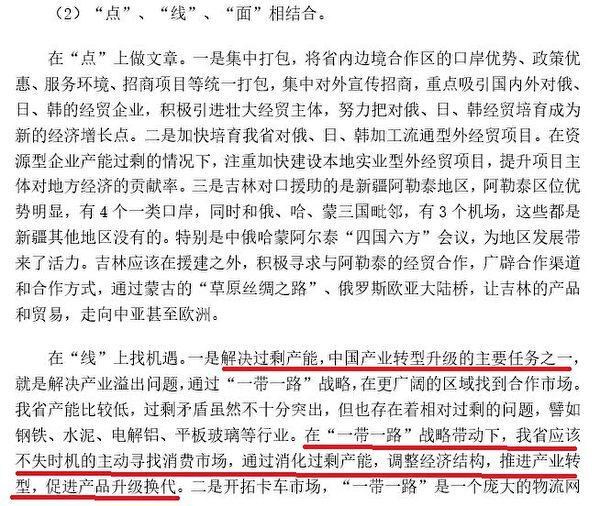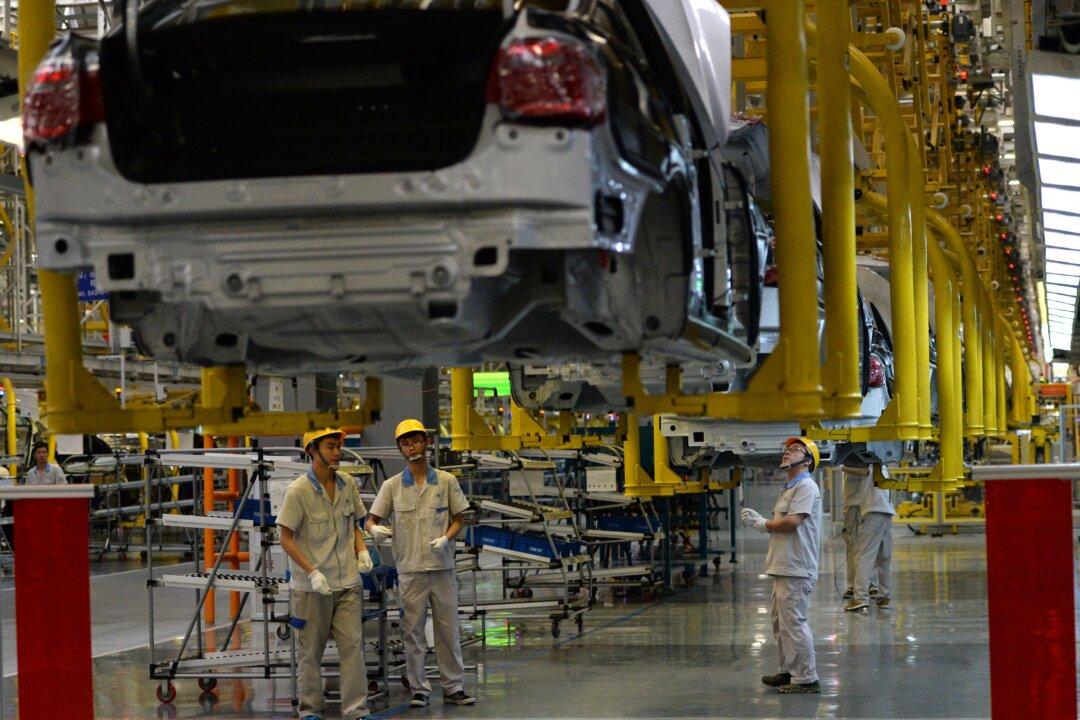Internal government documents obtained by The Epoch Times suggest that one of the main drivers behind China’s Belt and Road Initiative (BRI, also known as “One Belt, One Road”) is to get rid of the country’s excess industrial capacity by moving them out to participating BRI countries.
Under the Banner of International Industrial Capacity Cooperation
The BRI is a far-reaching, strategic significance for the global leadership of the Chinese Communist Party (CCP), according to a report by the Jilin provincial government, titled, “The Blueprint of Jilin’s Participation in the BRI.” In response to this move, Jilin has made an all-out effort to move out its excess industrial capacity.
Screenshot of an internal document of the Jilin provincial government describing the strategic significance of solving overcapacity. Provided by The Epoch Times





